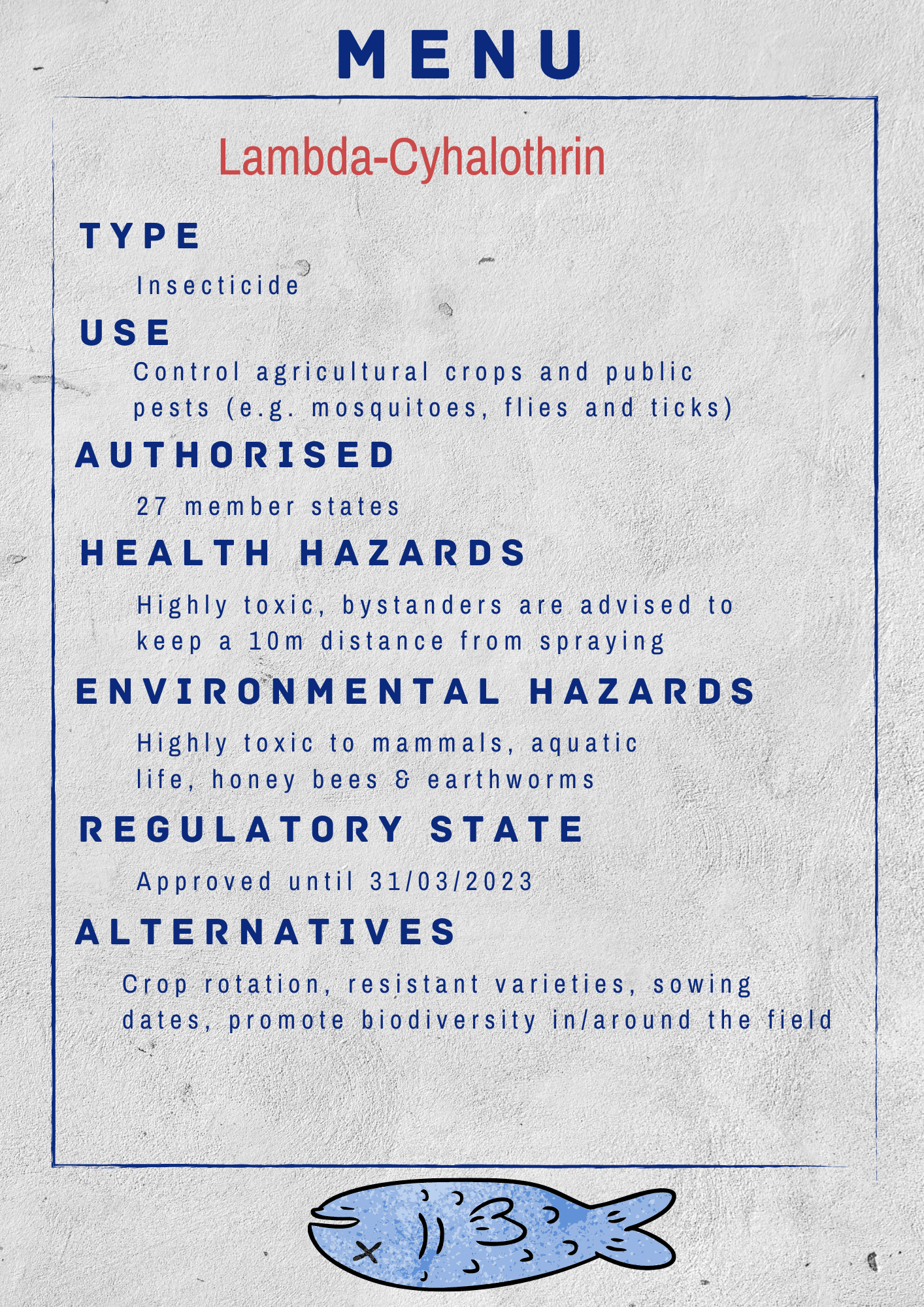Type: Insecticide , PFAS pesticide
Health Hazards: Acutely toxic in short term exposure. Very neurotoxic: bystanders are advised to keep a 10-meter distance from spraying. Independent studies suggest interactions of lambda-cyhalothrin with receptors of the endocrine and immune systems.
Environmental Hazards: Highly toxic to mammals and fish, aquatic invertebrates and honey bees; moderately toxic to earthworms. Classified as acute and chronic very toxic to aquatic life.
Data gap: bioaccumulation in aquatic and terrestrial food chains.
Exposure: Authorised in all 27 member states.
Residues present in food are very high: 195 Maximum Residue Limits (MRLs) above the Level of detection (LOD) of 0.01 mg/kg are established, ranging from 0.002mg/kg to 10.00 mg/kg per product (top 10 highest MRLs)
Regulatory State of Play: Approved until 31/03/2023.
Use: A quick-acting insecticide used to control a wide spectrum of agricultural crops and public pests, e.g. mosquitoes, flies and ticks. Authorised uses include spraying fields of wheat or potatoes with tractor-mounted sprayers, ground directed spray and foliar spraying. Used in garden and household products.
Alternatives: Crop rotation, resistant varieties, sowing dates, promote biodiversity in/around the field.
